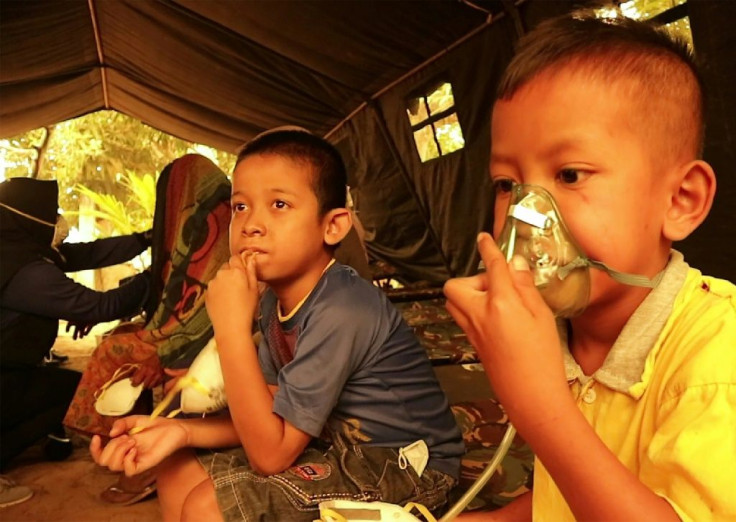Indonesian Forest Fires Putting 10 Million Children At Risk: UN

Air pollution from Indonesian forest fires is putting nearly 10 million children at risk, the United Nations warned Tuesday, as scientists said the blazes were releasing vast amounts of greenhouse gases.
The fires have been spewing toxic haze over Southeast Asia in recent weeks, closing schools and airports, with people rushing to buy face masks and seek medical treatment for respiratory ailments.
Jakarta has deployed tens of thousands of personnel and water-bombing aircraft to tackle the slash-and-burn blazes set to clear agricultural land. The fires are an annual problem but this year are the worst since 2015 due to dry weather.
Almost 10 million people under 18 -- a quarter of them below five -- live in the areas worst affected by fires on Indonesia's Sumatra island and the country's part of Borneo island, UN children's agency UNICEF said.
Small children are especially vulnerable due to undeveloped immune systems while babies born to mothers exposed to pollution during pregnancy may have problems such as low birth weight, they said.
"Poor air quality is a severe and growing challenge for Indonesia," said Debora Comini from UNICEF.
"Every year, millions of children are breathing toxic air that threatens their health and causes them to miss school -- resulting in lifelong physical and cognitive damage."
Thousands of schools have been closed across Indonesia due to poor air quality, with millions of youngsters missing classes.
Blood-red skies
Pictures circulating on social media have shown the sky turning blood-red over hard-hit Jambi province, on Sumatra, in the middle of the day due to the haze.
Schools were forced to shut across Malaysia last week as smog from its neighbour clouded the skies, while Singapore was also shrouded in haze during the weekend's Formula One motor race.
Air quality improved in Malaysia Tuesday and was at "moderate" levels on an official index in most places with the skies looking largely clear, while the haze had lifted from Singapore.
A regional forecasting centre said the number of "hotspots" -- areas of intense heat detected by satellite which indicate a likely fire -- had fallen sharply on Sumatra. Fires on the island are usually blamed for belching smog over Malaysia and Singapore.
There have been a series of wildfire outbreaks worldwide, from the Amazon to Australia, and scientists are increasingly worried about their impact on global warming.
The Copernicus Atmosphere Monitoring Service, part of the EU's Earth observation programme, said this year's Indonesian fires were releasing almost as much carbon dioxide into the atmosphere as blazes in 2015, the worst for two decades.
From the start of August to mid-September, the fires emitted about 360 megatonnes of the greenhouse gas, compared to 400 megatonnes over the same period four years ago, the service said.
One megatonne is equivalent to one million tonnes.
At the peak of the 2015 crisis, the fires were emitting more greenhouse gases into the atmosphere each day than all US economic activity, according to environmental watchdog the World Resources Institute.
Major forest fires are a double blow to the climate. As well as releasing greenhouse gases, the blazes destroy a natural buffer against global warming as forests suck carbon dioxide out of the atmosphere.
Indonesia has insisted it is doing everything it can to end the crisis. But firefighters have struggled to tame the most serious blazes, which burn deep underground in carbon-rich peat.
burs-sr/rbu
© Copyright AFP 2024. All rights reserved.





















